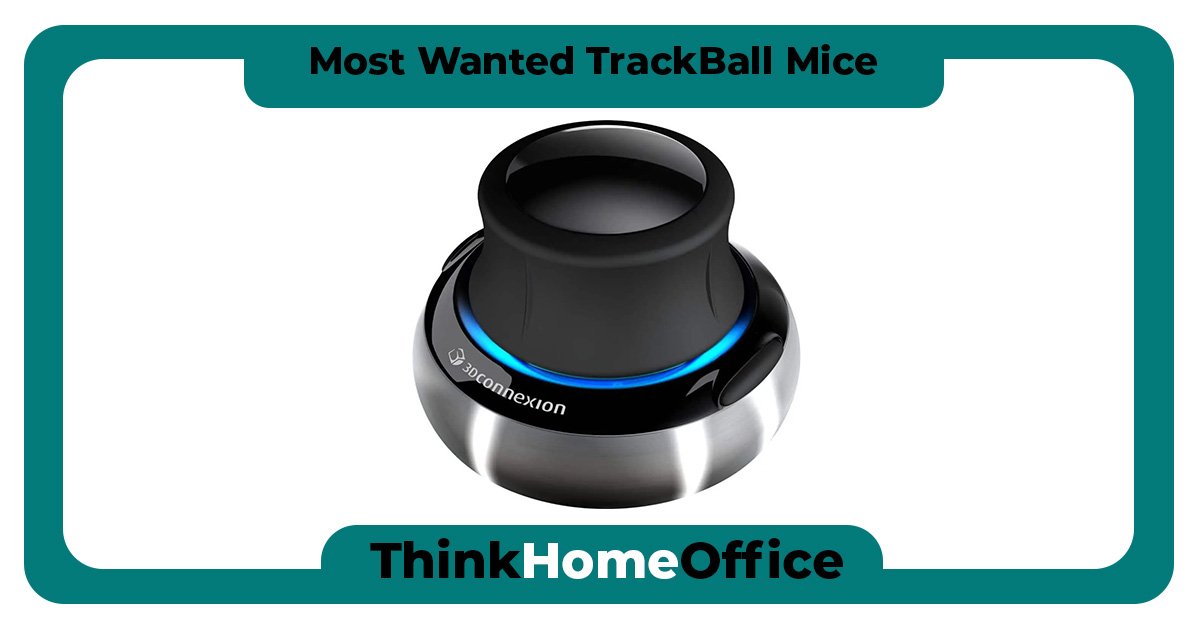In today’s fast-paced work environment, maintaining focus and productivity is crucial for success. However, we often overlook the impact of our surroundings on our ability to concentrate and perform tasks efficiently. In this article, we explore the role of ambient lighting in creating an optimal work environment. From the effects of natural light to the influence of artificial lighting, we delve into the ways in which lighting can be used to set the mood and enhance work focus. Join us as we uncover the importance of this often underestimated element in the workplace.
Understanding the Concept of Ambient Lighting
Definition of Ambient Lighting
Ambient lighting refers to the general illumination in a space that provides overall visibility and sets the mood or atmosphere. It is the foundation of any lighting design and is used to create a warm, inviting environment. Unlike focused task lighting, ambient lighting is meant to be soft and diffuse, providing a gentle and comfortable level of brightness throughout the space.
History and Development of Ambient Lighting
The concept of ambient lighting has been around for centuries, although it has evolved significantly over time. In ancient times, people relied on natural light during the day and candlelight or oil lamps at night to create a warm and soothing atmosphere. As technology advanced, the invention of incandescent bulbs in the late 19th century revolutionized lighting design. Instead of relying on flickering candlelight, people could now have a steady and consistent source of ambient light. Over the years, ambient lighting has been further enhanced by the introduction of fluorescent lamps, LED lights, and other modern lighting technologies.
Different Types of Ambient Lighting
There are several types of ambient lighting that can be used to create different moods and atmospheres within a space. Some common types include:
Ceiling-mounted fixtures: These fixtures are typically installed in the center of the ceiling and provide even and widespread illumination.
Wall sconces: Sconces are mounted on the walls and cast light upwards or downwards, creating a subtle and indirect illumination that adds depth to the room.
Floor and table lamps: These portable lighting fixtures can be strategically placed around the room to enhance the ambient lighting and add a touch of style.
Recessed lighting: Recessed lights are installed into the ceiling and provide a clean and modern look. They can be used to create a soft wash of light or to highlight specific areas of the room.
Natural light: The use of natural light, such as through windows or skylights, can also contribute to the ambient lighting of a space. It brings in the dynamic and ever-changing qualities of daylight, creating a more immersive and connected environment.
By combining these different types of ambient lighting, designers and architects are able to create a harmonious and well-balanced lighting scheme that enhances both the functionality and aesthetics of a space.
The Psychology Behind Lighting and Mood
Correlation between Lighting and Mood
Lighting has a profound impact on our mood and emotions. Bright and vibrant lighting tends to make us feel more alert and energized, while dim and warm lighting evokes a sense of relaxation and coziness. This correlation between lighting and mood can be attributed to the way light affects our brain and the production of neurotransmitters such as serotonin and melatonin.
Effect of Lighting on Human Psychology
Lighting can influence various aspects of human psychology, including emotional well-being, cognitive performance, and sleep patterns. Exposure to bright, cool light during the day can enhance productivity and increase focus, while warm and dim lighting in the evening helps promote relaxation and prepare the body for sleep. Moreover, lighting can also affect our perception of colors, space, and even other people, influencing our interactions and overall mood.
Studies Supporting the Impact of Lighting on Mood
Numerous studies have been conducted to explore the impact of lighting on mood and human psychology. A study published in the Journal of Environmental Psychology found that individuals exposed to warmer lighting reported higher levels of happiness and comfort compared to those exposed to cooler lighting. Another study published in the Journal of Applied Psychology found that improved lighting conditions in the workplace resulted in higher job satisfaction and better overall mood among employees. These findings highlight the significant role that lighting plays in shaping our emotional well-being and overall productivity.

Ambient Lighting and Work Focus
How Lighting Affects Concentration
Proper lighting is essential for maintaining optimal focus and concentration in a work environment. Insufficient lighting, such as working in dimly lit spaces, can strain the eyes and lead to eye fatigue, making it harder to concentrate on tasks. On the other hand, excessive lighting or glare can also be distracting and cause visual discomfort. Finding the right balance of lighting intensity and quality is crucial for promoting a conducive work environment that fosters concentration and productivity.
Effect of Poor Lighting on Work
Poor lighting in the workplace can have a detrimental effect on both physical and mental well-being. Dim lighting or flickering lights can cause headaches, eyestrain, and fatigue. Insufficient lighting can also lead to increased errors and decreased productivity, as it becomes challenging to read documents or view screens accurately. In addition, inadequate lighting can create a gloomy and uninspiring atmosphere, which can negatively impact the overall mood and motivation of employees.
Enhancing Work Focus Through Improved Lighting
By implementing proper ambient lighting in the workplace, employers can significantly enhance work focus and productivity. Providing adequate and balanced lighting ensures that employees can see their tasks clearly without straining their eyes. This reduces the risk of eye fatigue and promotes concentration. Additionally, well-designed ambient lighting can contribute to a brighter and more inviting atmosphere, creating a positive and stimulating work environment that fosters creativity and focus.
Impact of Different Colors of Light on Work Concentration
Understanding Light Color Spectrum
Light can be described in terms of color temperature, which is measured in Kelvin (K) and ranges from warm to cool. Warm colors have lower color temperatures (around 2700K to 3000K) and emit a cozy and intimate glow, similar to candlelight. Cool colors have higher color temperatures (around 4000K to 6500K) and produce a bright and vibrant light, resembling daylight. Understanding the color temperature spectrum is crucial in designing ambient lighting that supports work concentration.
Effect of Different Colors of Light on Mood and Focus
Different colors of light have varying effects on our mood and cognitive function. Warm colors, such as yellows and oranges, tend to create a relaxing and comforting atmosphere. They can be beneficial in spaces where relaxation and calmness are desired, such as break rooms or lounges. Cool colors, such as blues and greens, on the other hand, promote alertness and focus. These colors are often used in work environments where concentration and productivity are crucial, such as offices or study areas.
Ideal Light Colors for Work Environment
In a work environment, a combination of warm and cool colors can be used to strike the right balance between relaxation and focus. Areas where employees need to recharge or take breaks can benefit from warm, soothing lighting to create a calming atmosphere. In areas where concentration and productivity are essential, cooler lighting with higher color temperatures can be utilized to promote alertness and stimulate cognitive function. It is crucial to consider the specific requirements of each work area when selecting the ideal light colors to optimize work concentration.

Role of Ambient Lighting in Different Work Environments
Lighting in Office Settings
In traditional office settings, ambient lighting plays a crucial role in creating a productive and comfortable work environment. Bright and evenly distributed lighting is key to reducing eye strain and creating a visually stimulating space. It is important to consider both the intensity and quality of light to ensure optimal visibility and focus. In open-plan offices, proper allocation of lighting fixtures and the use of task lighting can help minimize distractions and improve work concentration.
Lighting in Home Office Settings
With the rise of remote work and the increasing number of individuals working from home, the importance of ambient lighting in home office settings cannot be overlooked. Creating a dedicated workspace with adequate lighting is crucial for maintaining focus and productivity. Natural light should be maximized by positioning the desk near a window or utilizing skylights whenever possible. Artificial lighting should complement the natural light and provide consistent illumination throughout the day.
Lighting in Creative Workspaces
Creative workspaces, such as design studios or art galleries, often require unique and dynamic lighting solutions. Ambient lighting in these environments should be flexible and adjustable to accommodate different artistic displays and activities. The use of directional spotlights, adjustable track lighting, or color-changing LEDs can enhance the artistic atmosphere and allow for highlighting specific elements or creating different moods. This type of lighting design stimulates creativity and influences the overall mood and inspiration of individuals working in these spaces.
Lighting in Industrial and Manufacturing Workspaces
Industrial and manufacturing workspaces demand a different lighting approach due to the specific tasks and safety requirements involved. Ambient lighting in these environments should provide sufficient brightness to ensure proper visibility and reduce the risk of accidents. High-intensity discharge lamps or LED fixtures with high lumen output are commonly used to illuminate large areas, while task-specific lighting is used to enhance precision and accuracy. The lighting design should focus on minimizing glare and shadows to create a safe and efficient working environment.
The Connection Between Ambient Light and Employee Well-being
How Lighting Affects Employee Health
Lighting has a significant impact on employee health, both physically and psychologically. Insufficient lighting can cause eye strain, headaches, and fatigue, which can negatively affect an employee’s overall well-being. Inadequate exposure to natural light can also disrupt the body’s circadian rhythm, leading to sleep disturbances and decreased immune function. Additionally, poor lighting can contribute to mental health issues, such as decreased mood and increased stress levels.
Risk of Poor Lighting to Employee Well-being
The risk of poor lighting to employee well-being cannot be underestimated. Prolonged exposure to inadequate lighting conditions can lead to chronic eye strain and vision problems. It can also contribute to musculoskeletal issues, as employees may adopt incorrect postures or positions to compensate for insufficient lighting. Furthermore, poor lighting can affect employee mood, motivation, and job satisfaction, ultimately leading to decreased productivity and increased turnover rates.
Benefits of Good Lighting to Employee Health
On the other hand, good ambient lighting has numerous benefits for employee health and well-being. Properly lit work environments reduce the risk of eye strain, headaches, and fatigue, improving overall visual comfort and reducing the incidence of related health issues. Exposure to natural light has also been shown to positively impact mental health and circadian rhythm, leading to improved sleep quality and higher levels of alertness during the day. High-quality lighting enhances employee mood and motivation, promoting a positive and supportive workplace culture that contributes to higher job satisfaction and employee retention.
Modern Trends in Workspace Lighting
Emerging Lighting Technologies
In recent years, there has been a surge in the development of new lighting technologies that offer enhanced functionality and energy efficiency. LED lighting, in particular, has gained widespread popularity due to its long lifespan, low energy consumption, and versatility in design. LED lights can be programmed to emit different colors and intensities, making them suitable for creating dynamic and customizable ambient lighting schemes. Additionally, smart lighting systems that can be controlled through mobile apps or voice commands are becoming increasingly common, allowing for convenient and personalized control of ambient lighting.
Adoption of Smart Lighting in Workspaces
Smart lighting systems are revolutionizing the way ambient lighting is utilized in workspaces. These systems provide greater control and flexibility, allowing for the customization of lighting scenes and scheduling of lighting changes throughout the day. Employees can adjust the lighting levels and colors to suit their individual preferences, promoting a more personalized and comfortable work environment. Smart lighting also offers energy-saving benefits, as it can be programmed to automatically adjust brightness based on natural light levels or occupancy, minimizing energy consumption and reducing environmental impact.
Transition to Green and Energy-Efficient Lighting Solutions
As sustainability becomes a key consideration in workspace design, there is a growing trend towards green and energy-efficient lighting solutions. LED lights, for example, consume significantly less energy compared to traditional incandescent or fluorescent bulbs, reducing electric bills and carbon footprint. Additionally, the use of natural light through daylighting strategies, such as skylights or light shelves, can further minimize reliance on artificial lighting and provide a more pleasant and eco-friendly work environment. The adoption of energy-efficient lighting solutions aligns with organizations’ commitment to sustainability and contributes to a healthier planet.
Case Studies of Successful Ambient Lighting Deployment
Companies that Implemented Lighting Changes
Multiple companies have recognized the importance of ambient lighting and successfully implemented lighting changes in their workplaces. Nike’s European Headquarters in the Netherlands revamped its lighting system, replacing traditional fluorescent fixtures with LED lights. The new lighting design improved energy efficiency by 75% and created a more vibrant and motivational atmosphere for employees. Another example is the Microsoft Headquarters in Redmond, Washington, which integrated a smart lighting system that allows employees to control the intensity and color temperature of their workspace lighting, resulting in increased employee satisfaction and productivity.
Impact on Employee Performance and Health
The implementation of appropriate ambient lighting solutions in these companies has had a positive impact on both employee performance and health. With improved lighting, employees reported enhanced focus, reduced eye strain, and overall improved well-being. Productivity levels also witnessed an uptick, as the comfortable and visually stimulating environment promoted increased task engagement and efficiency. Moreover, the positive effects of proper lighting contributed to employee satisfaction and fostered a sense of well-being and belonging within the workplace.
Challenges and Solutions in Implementing Light Alterations
While the benefits of implementing ambient lighting alterations are evident, there are challenges that organizations may encounter during the process. One common challenge is resistance to change, as employees may be resistant to adjustments in lighting fixtures or lighting systems. Communicating the benefits and involving employees in the decision-making process can help address these concerns and gain their support. Another challenge is finding the right balance between lighting intensity and color temperature to meet the diverse needs of employees. Collaborating with lighting designers or experts can ensure that the lighting changes align with the specific requirements of the workspace and its occupants.
Applying the Principles of Ambient Lighting at Work
Steps to Assess Current Lighting Conditions
Before implementing any changes, it is essential to assess the current lighting conditions in the workspace. This involves evaluating the brightness levels, color temperature, and overall quality of light. Surveys or interviews with employees can provide valuable insights into their preferences and any issues they may be experiencing with the existing lighting.
Considering a Lighting Change
Based on the assessment of the current lighting conditions, organizations can consider different lighting changes, such as upgrading to energy-efficient LED lights, incorporating natural light through architectural modifications, or implementing smart lighting systems. The specific goals and requirements of the workspace should guide the decision-making process.
Implementing Ambient Lighting Solutions
Once a lighting change has been decided upon, it is important to develop a comprehensive implementation plan. This includes selecting the appropriate lighting fixtures, setting up a timeline for installation, and ensuring proper coordination with electricians or lighting professionals. Regular testing and evaluation should also be conducted to ensure that the implemented ambient lighting solutions meet the desired objectives and provide an optimal work environment.
Future of Ambient Lighting in Workspaces
Rising Awareness about the Importance of Lighting
As the impact of ambient lighting on work focus and productivity becomes more widely recognized, there is a rising awareness among organizations about the importance of investing in proper lighting design. More emphasis is being placed on creating work environments that support employee well-being and enhance performance through targeted lighting solutions.
Potential Trends in Workspace Lighting
The future of ambient lighting in workspaces is likely to witness several trends. Personalized lighting control, enabled by smart lighting systems, is expected to become more prevalent, allowing employees to tailor their lighting preferences according to their individual needs. Integration of biophilic design principles, incorporating natural elements like plants and natural light, is also expected to gain traction for enhanced well-being and connection to nature. Additionally, the use of circadian lighting, which mimics the natural color temperature changes throughout the day, may be further explored to regulate employees’ sleep patterns and improve overall health and productivity.
Impact of Future Lighting Solutions on Work Focus and Productivity
As advancements in lighting technology continue to unfold, the impact of future lighting solutions on work focus and productivity is likely to be significant. With the ability to precisely control lighting intensity, color temperature, and even light distribution, workspaces can be fine-tuned to meet the specific needs of individual employees or tasks. Enhanced dimming capabilities, glare reduction, and improved color rendering will contribute to creating more comfortable and visually supportive work environments, resulting in increased work focus and productivity.
In conclusion, ambient lighting plays a vital role in setting the mood and enhancing work focus in various work environments. By understanding the psychology behind lighting and its effects on mood and concentration, employers can utilize appropriate ambient lighting to create conducive workspaces. Whether it is selecting the optimal light colors, implementing modern lighting technologies, or considering employee well-being, the principles of ambient lighting are paramount in promoting a productive and healthy work environment. As companies continue to recognize the impact of lighting on work focus and productivity, the future holds exciting prospects for innovative lighting solutions that will further enhance employee well-being and improve workplace performance.






